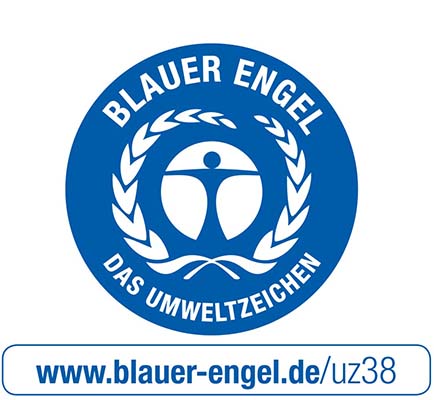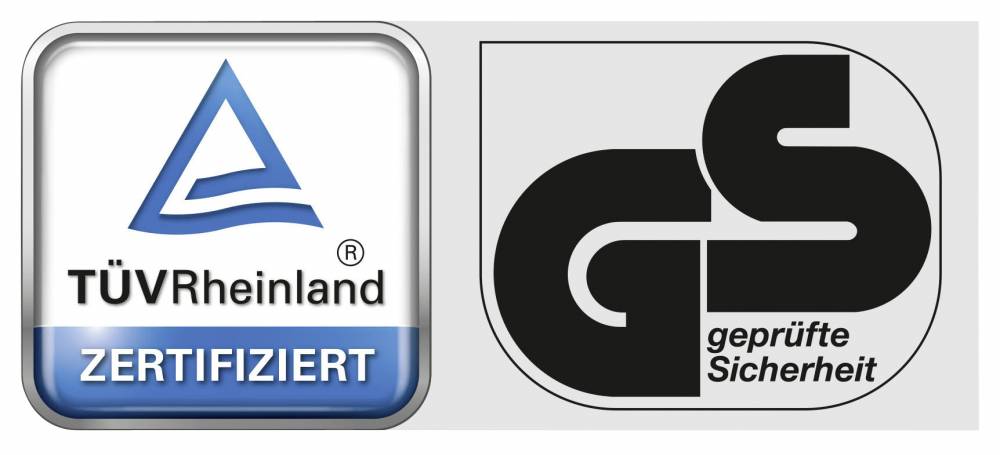Materials and care instructions
hülsta furniture stands for high quality and individuality. The selection of materials and elaborate finishing techniques ensure that the furniture easily stands up to everyday life. If you follow these tips, you will be able to enjoy your furniture for years to come.
Veneers
Regular care
Use a slightly damp, soft and lint-free cloth for regular dust removal. Always clean in the direction of the grain.
More persistens stains
Dirt and grease stains can best be removed using lukewarm water with a splash JEMAKO® power cleaner* and a soft, lint-free cotton cloth. We recommend using a damp cloth and treating the entire surface without applying minimal pressure. Afterwards, wipe dry. Water, ink, fruit and felt tip pen stains must be removed immediately, as they will otherwise penetrate the surface. For this reason, it is also important to avoid intensive ink penetration (e.g. by ballpoint pen or stamping ink).

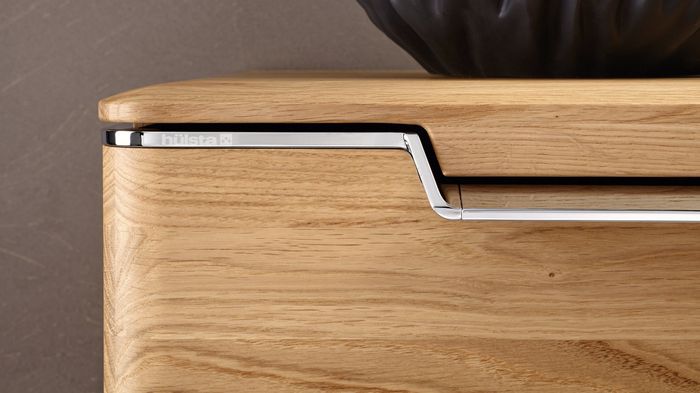
Solid woods
Regular care
Use a soft, lint-free cloth for regular dust removal. Surfaces with closed pores (maple, beech for instance) can be cleaned with luke-warm water with a splash of a mild cleaner. Open-pored surfaces (oak, walnut for instance) should only be treated with a slightly damp cloth. After cleaning, dry your solid wood surfaces with a soft cloth.
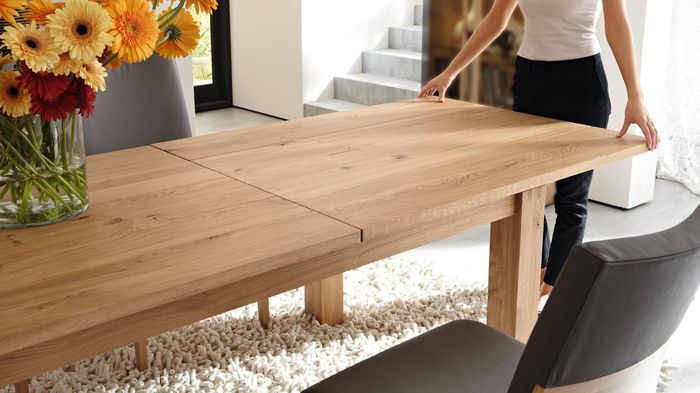
More persistent stains
Dirt and grease stains can best be removed using lukewarm water with a splash JEMAKO® power cleaner* and a soft, lint-free cotton cloth. We recommend using a damp cloth and treating the entire surface without applying minimal pressure. Afterwards, wipe dry. Water, ink, fruit and felt tip pen stains must be removed immediately, as they will otherwise penetrate the surface. For this reason, it is also important to avoid intensive ink penetration (e.g. by ballpoint pen or stamping ink).
Lacquers
Regular care
hülsta lacquered surfaces are very easy to care for and do not require specifi c maintenance. Dust can easily be removed using a feather duster. Alternatively, a slightly damp cloth can be used for closed-pored wood surfaces. Never use substances that leave traces (waxes or oils for instance) which yellow or leave resin. Do not use any abrasive substances (for instance aggressive cleaners, scouring powder or solvents) either. Open-pored surfaces such as oak might roughen when exposed to dampness.
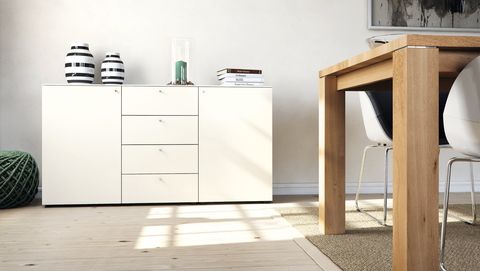
More persistent stains
Remove spilt liquids immediately with an absorbent, moistened cloth, as this facilitates cleaning. Coffee and tea stains are best removed by applying an undiluted mild cleaner directly to a damp cloth. Only apply little pressure whilst cleaning and wiping. Ink, fruit and felt tip pen stains, tea, coffee, red wine and mustard should not be left on the surface and must be removed immediately. Intensive exposure to ink (for instance ball point pen ink and stamp ink) must be avoided at all cost.
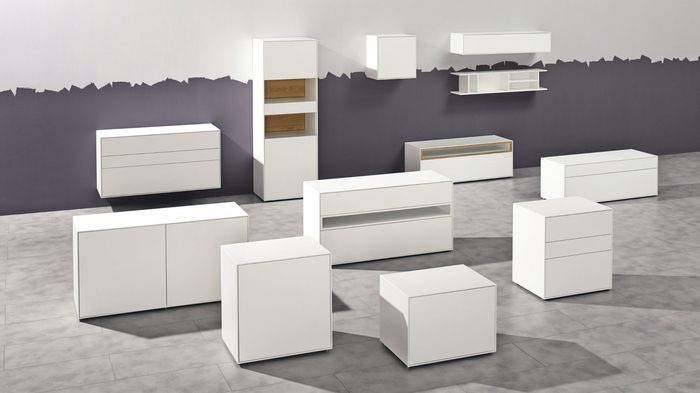

High-gloss
Regular care
Always use a damp cloth to wipe high-gloss surfaces and do not apply too much pressure during the cleaning process. Dry dusters may cause scratches. Conventional micro fibre cloths are also unsuitable due to their sharp fibres and can matt the surface with fine scratches. We therefore recommend the Dustar®-Cleaner cloth from JEMAKO® in combination with the Dustar®-Cleaner*. In order to ensure perfect care of your high-gloss surfaces, hülsta has developed the Ultra-Gloss care product. Ultra-Gloss seals the surfaces with an additional protective layer and makes them even more resistant. Ultra-Gloss is ecologically harmless and can even be used for surfaces in the kitchen. Ultra-Gloss can be ordered directly from hülsta. Do not use furniture polishes (waxes, oils) as these leave a greasy film on the surface and reduce brilliance. Should the surface over time have lost some of its brilliance, we recommend using UltraGloss. This might be the case after 12 months.
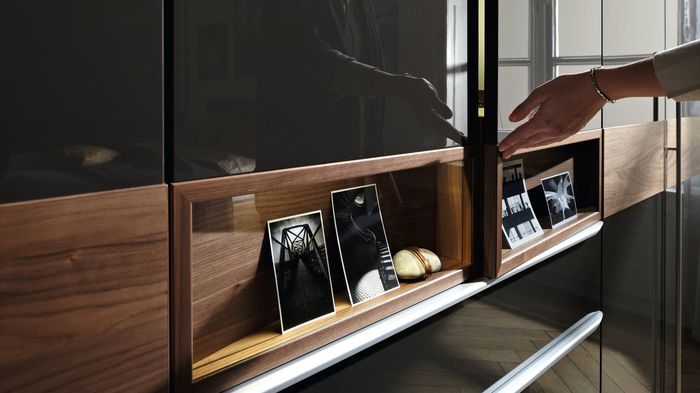
Removal of dirt and stains
Single stains, more persistent stains and greasy fingerprints can generally be easily removed using the Dustar®-Cleaner from JEMAKO® in combination with the Dustar®-Cleaner cloth*. Do not apply pressure during cleaning and dry-wiping. This is how to maintain the fascinating brilliance of the surfaces.
Please note that abrasive cleaning products such as aggressive (e.g. alcohol-containing) products, solvents (thinner), polishes or scouring agents can lead to irreversible damage of your highgloss sur faces. Please do not use them in order to maintain your high-gloss furniture. Please note the tips regarding more persistent staining, heat rings and liquids in the chapter “Lacquers“.
Metals
Correct care for metal
Although metals such as steel and aluminium are relatively hard, they can be scratched by sharp, pointed or rough objects. Surface finishing such as lacquering, galvanising and anodising do not make them scratch-resistant either. Do not use any objects liable to scratch or cleaning agents that contain abrasive ingredients when cleaning the surfaces. Even alcohol is too aggressive for the treated metal surfaces and can lead to damage. Generally, a damp, soft cotton cloth is sufficient for cleaning metal components. In the event of more persistent stains, please refer to the care instructions for the special types of surfaces.

Lacquered steel surfaces
For lacquered steel surfaces, only use lukewarm water with washing up liquid or a mild cleaning agent, otherwise the surface could be damaged. Afterwards, wipe with clear water. Only use soft cotton cloths for wet cleaning and drying.
Stainless steel
To clean heavy dirt, use a special stainless steel care product according to the instructions of the manufacturer. Please note that different products for matt and high-gloss steel surfaces are available within the trade.
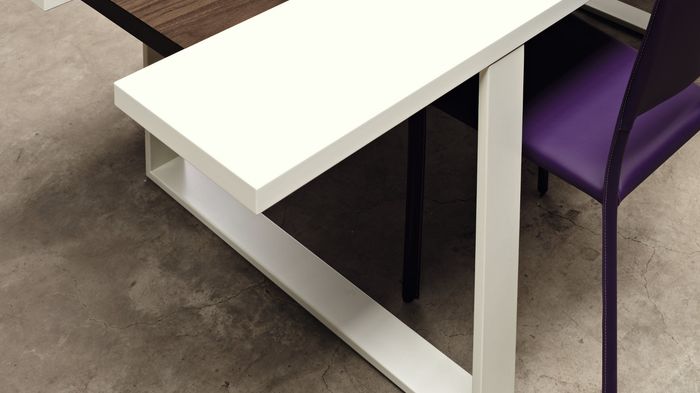
Chrome
In order to retain that special shine, chromed surfaces must only be cleaned with a soft cloth and thinned white spirit without applying any pressure. Finally, polish the surface with a soft cloth until it is dry.
Aluminium | Brass
A damp chamois leather is best for cleaning these surfaces. It cleans effectively and protects from scratching. Afterwards, the metal should be dried with a soft cloth.

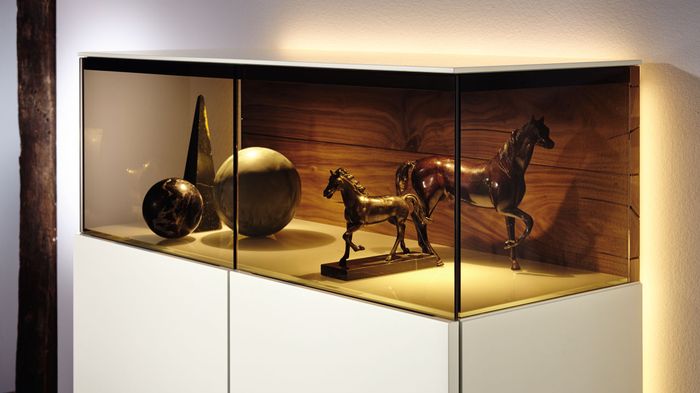
Glass
Glossy glass
This is particularly easy to care for. The smooth surface can be effortlessly cleaned with a soft woollen cloth and water, if required add a splash of a mild detergent. Glass cleaners are also good. Finally, polish the surface with a clean, dry cotton cloth. Please avoid splashing any glass cleaner on adjacent lacquered or wooden surfaces.
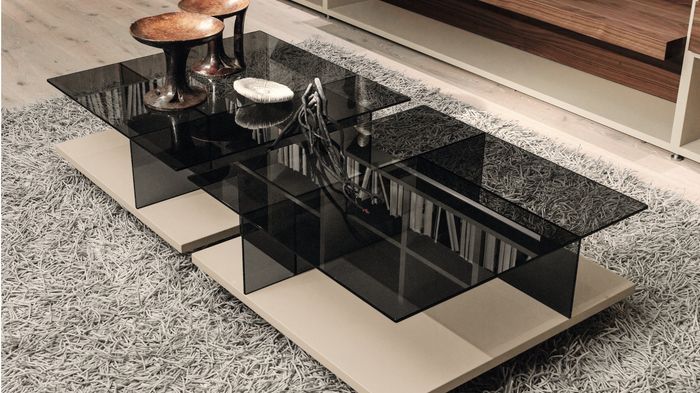
Cleaning of satinized glass
For regular care and cleaning, we recommend wiping the table with a damp JEMAKO® professional cloth*, then wiping it dry with a JEMAKO® dry cloth. More persistent stains can be removed using the JEMAKO® intensive cleaner in combination with the green JEMAKO® fibre cloth. Afterwards, wipe with the damp JEMAKO® professional cloth, then wipe dry using the JEMAKO® dry cloth.
Natural stone - ceramic
Ceramic only has a limited capacity to deform plastically. Strong impact in the edge area may lead to fissures and even chipping and breaking of the material. A ceramic top can sometimes feature small pigments in a different colour. These cannot be avoided during the manufacturing process and are typical features of the material that do not represent a fault. Avoid placing hot objects directly onto the surface by using appropriate coasters. Ceramic has a stain repellent surface, which can effortlessly be cleaned with a damp cotton cloth or a foam sponge, commercial cleaner (e.g. glass cleaner) or soapy water. Wipe the cleaned areas dry in order to avoid chalk residue.

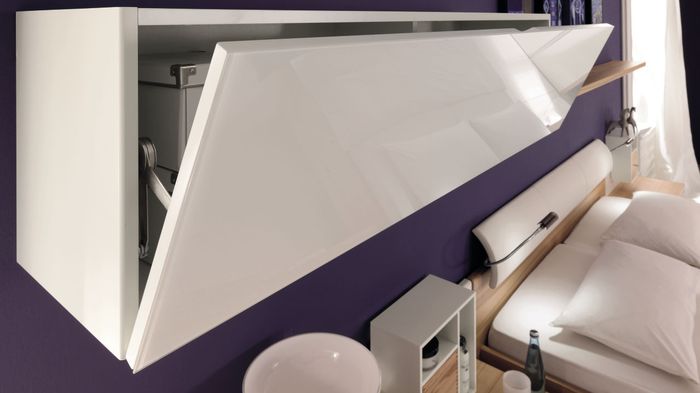
Brackets
Locks
Locks are provided with special grease. They do not require any maintenance. Cylinder locks have graphite lubrication. If they become stiff over time, simply blow a little graphite powder (no oil) into the cylinder.
Hinges
Wipe hinges with a slightly damp or dry cloth. Do not use any abrasive substances; they affect the surface, collecting in the hinges, thus making the moving parts susceptible to wear. Hinges are greased for long-term use. If there is still some noise (creaking) during use, simply apply a thin layer of clear sewing machine oil or silicone spray using a soft brush. Do not use any animal or vegetable oils.
Electronics and lighting
Lighting
Isolate the power supply before changing lamps or components. Only clean lamps and sockets with a dry or slightly damp cotton or leather cloth with the power turned off and when the device has cooled down. Only exchange lamps and lights for identical parts with the same performance in order to avoid a possible overload of the transformer and therefore malfunction. When changing lamps and lights, take note of the indicated performance values (watt/specifications) and ensure the correct position of the new lamps, as safety and functionality could otherwise be affected. As the colour of the light has an impact on design and atmosphere, it is advisable to only use lamps and lights with identical colours (e.g. warm white = approx. 2700-3000K). As all lamps warm up during operation, they must not be covered, in order to avoid a build-up of heat.
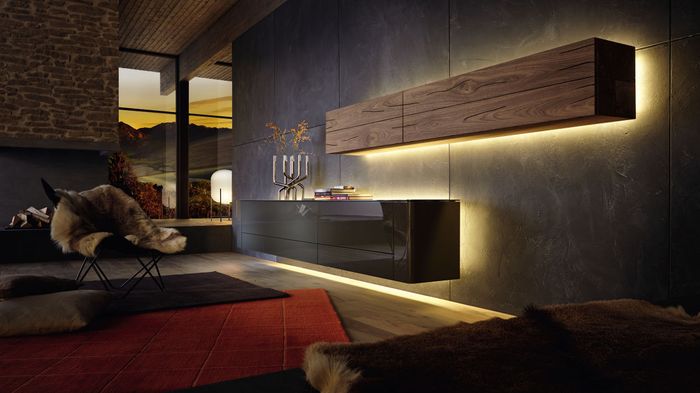
Switches and remote controls
Because of their electronic components, switches and remote controls are very sensitive. If required, they can be carefully cleaned with a dry cloth. Detailed information about the correct and safe handling of all of the electronic and lighting units can be found in the respective operating instructions.
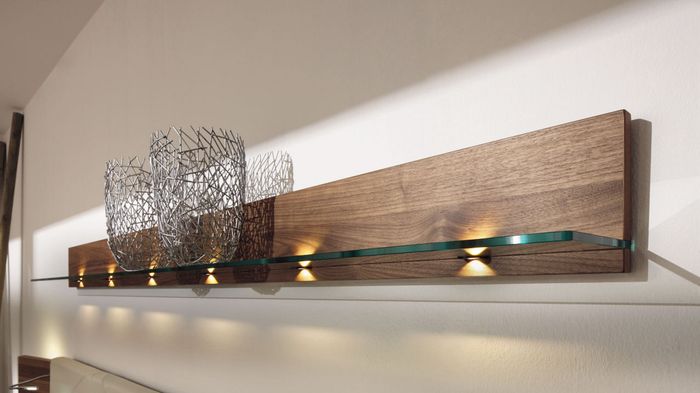
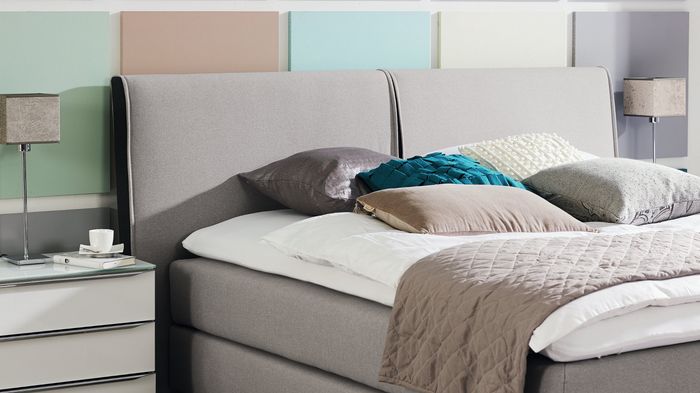
Fabric covers
Please refer to the care symbols on the products!
Non-colourfast textiles (such as jeans and other clothing) can transfer colour onto the cover material, which is particularly obvious on light and uni- coloured materials. This staining cannot be removed from most cover fabrics and do not represent a case for guarantee. The cover fabrics used by us feature a high friction resistance, thus reducing staining. Particularly dark, intensive colours might slightly stain in the beginning within the given tolerances.

Protect your upholstered furniture from direct sunlight, as this could change or bleach the colours. The same applies to halogen lighting. If the room air is too dry, natural fibres can become brittle. In very dry environments, synthetic fabrics get statically charged and therefore get dirty more quickly. A balanced room climate is therefore as beneficial for your upholstered furniture as it is to you. Over time, folds and creases result in good cover fabrics developing their individual character. The quality of the material ensures that they will always maintain their elegance.
Leather
In order to enjoy your leather furniture for years to come, never treat the leather with solvent-containing cleaners (stain removers, turpentine, benzene) or with shoe or floor polish. Only special leather care products and cleaners are suitable for the special requirements of this natural material. In order to ensure that the care product or cleaner is suitable for your furniture, test it in an inconspicuous area or on the enclosed sample prior to use. Always use a white, soft and clean cloth. Should the cloth show any trace of colour, then the product is unsuitable for your leather furniture.

If in doubt, rely on the experience of a leather upholstery expert. Leather furniture should not be exposed to direct sunlight, as radiation changes and bleaches its colour. Strong halogen lighting has a similar effect. Strong heat from the sun, spot lights or radiators promote dry room air, which might make the leather of your furniture brittle in the long term. Exposure to light changes the colour of the leather and fades it. Ensure that the room air is sufficiently humid in order to keep the leather soft and supple.




